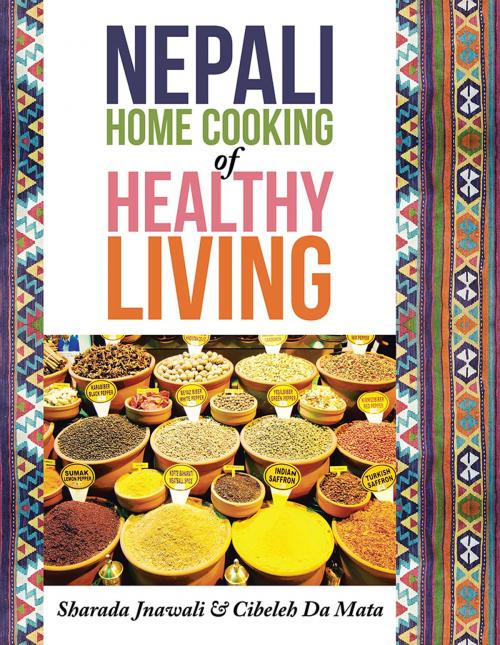Nepali Home Cooking for Healthy Living
Nonfiction, Food & Drink, International, European, Middle Eastern| Author: | Sharada Jnawali, Cibeleh Da Mata | ISBN: | 9781493135400 |
| Publisher: | Xlibris AU | Publication: | July 21, 2014 |
| Imprint: | Xlibris AU | Language: | English |
| Author: | Sharada Jnawali, Cibeleh Da Mata |
| ISBN: | 9781493135400 |
| Publisher: | Xlibris AU |
| Publication: | July 21, 2014 |
| Imprint: | Xlibris AU |
| Language: | English |
This book is an attempt to present selected Nepali traditional vegetarian cooking accompanied by health-related information and the wide use and respect for medicinal spices and herbs in the kitchen. The book also shows that local foods are deeply intertwined with culture, religion, and traditional values while providing us with a balanced diet and practices of health maintenance and well-being. It also presents some ideas on how added variety, combinations, and improvisation can add value and give healthy results. Nepal, a tiny South Asian country by any geographic standard, stretches from the lowlands of the subtropical Terai plains in the south to the highlands of the Himalayas, combining Nepali culture with different traditions and festivals rooted in all corners of the country. Such diversity has provided an ample space for the growth of multiple Nepali cuisines that demonstrate a way of life, associating food with religion and culture and representing multiple castes, ethnicities, eating patterns, festivals, geographic and seasonal contexts, and special occasions. Each festival of respective communities is associated with eating and feeding rituals. In general, Nepali cooking is also influenced by Tibetan or Indian styles, either by using varieties of spices, stir-frying, boiling, or steaming. With specific reference, many Nepali dishes are derived from a mixture of great culinary traditions of the indigenous Newari culture of the Kathmandu valley, Brahmin/Chhetri practices in the hilly region, the famous Thakali cooking of the high mountain of the western region, Sherpa and Rai Limbus of high altitude, and Madhesi cultures of the southern plain. Thus food diversity has also been one of the mediums in terms of building links between ethnic groups and respective social institutions and cultures.
This book is an attempt to present selected Nepali traditional vegetarian cooking accompanied by health-related information and the wide use and respect for medicinal spices and herbs in the kitchen. The book also shows that local foods are deeply intertwined with culture, religion, and traditional values while providing us with a balanced diet and practices of health maintenance and well-being. It also presents some ideas on how added variety, combinations, and improvisation can add value and give healthy results. Nepal, a tiny South Asian country by any geographic standard, stretches from the lowlands of the subtropical Terai plains in the south to the highlands of the Himalayas, combining Nepali culture with different traditions and festivals rooted in all corners of the country. Such diversity has provided an ample space for the growth of multiple Nepali cuisines that demonstrate a way of life, associating food with religion and culture and representing multiple castes, ethnicities, eating patterns, festivals, geographic and seasonal contexts, and special occasions. Each festival of respective communities is associated with eating and feeding rituals. In general, Nepali cooking is also influenced by Tibetan or Indian styles, either by using varieties of spices, stir-frying, boiling, or steaming. With specific reference, many Nepali dishes are derived from a mixture of great culinary traditions of the indigenous Newari culture of the Kathmandu valley, Brahmin/Chhetri practices in the hilly region, the famous Thakali cooking of the high mountain of the western region, Sherpa and Rai Limbus of high altitude, and Madhesi cultures of the southern plain. Thus food diversity has also been one of the mediums in terms of building links between ethnic groups and respective social institutions and cultures.















